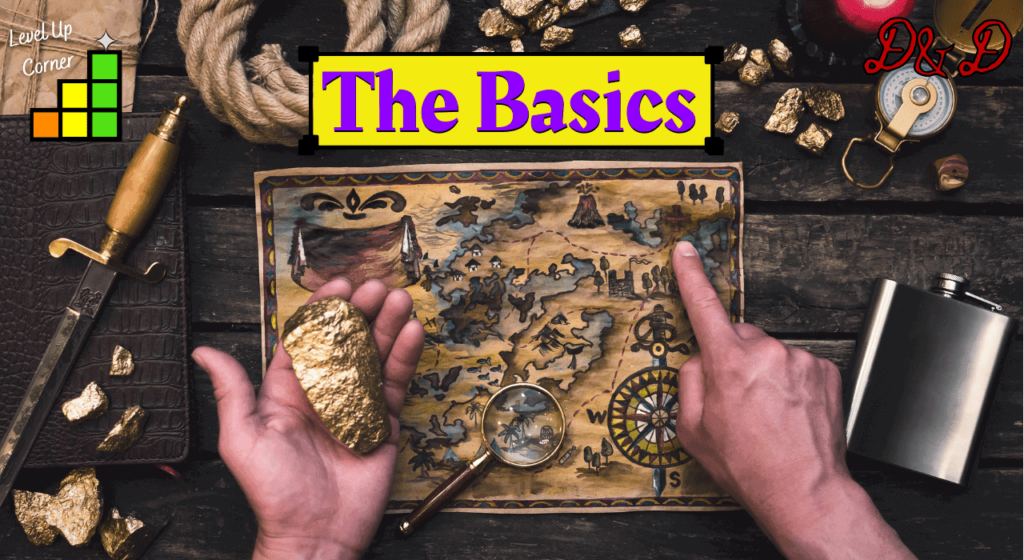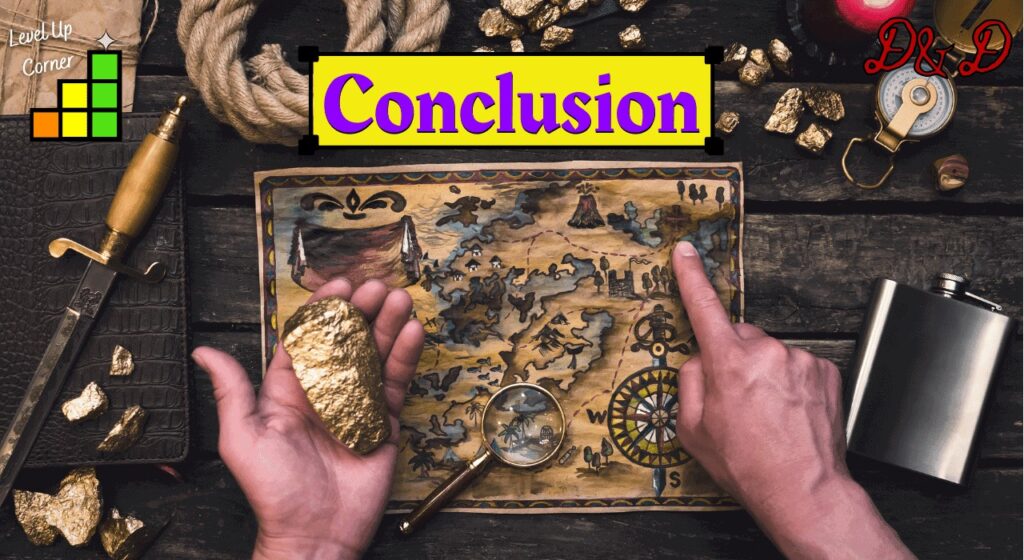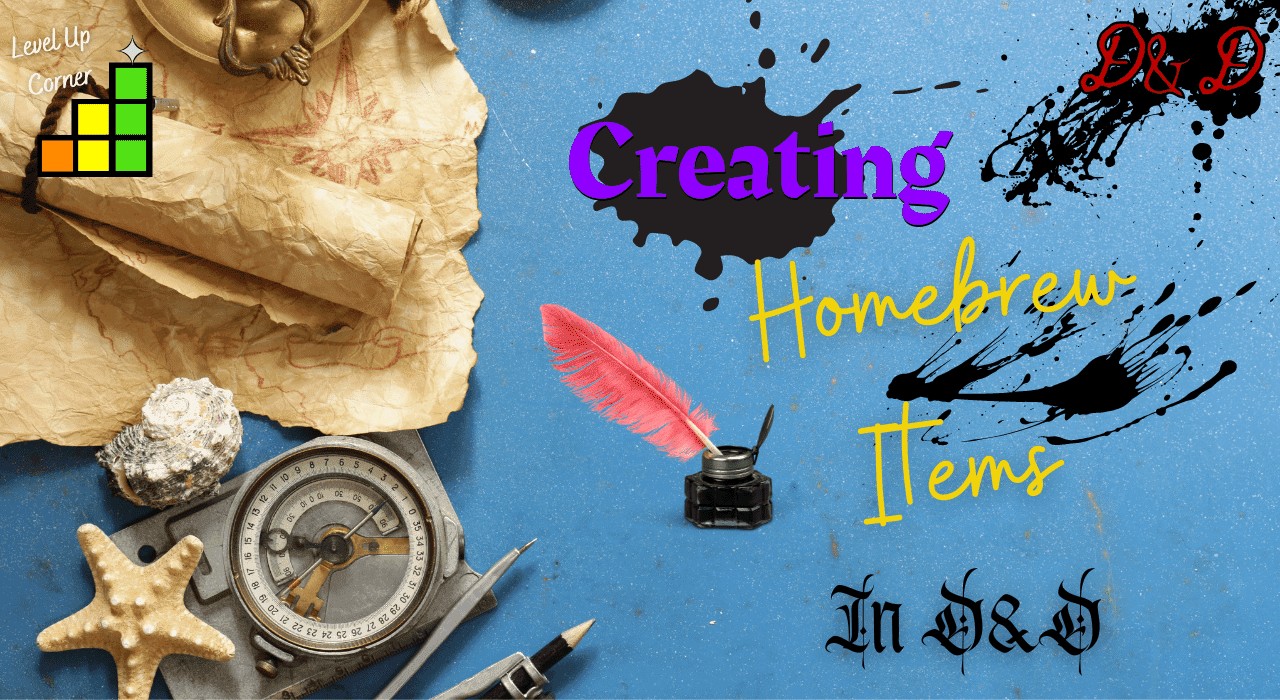So you want to create your own homebrew items in D&D? This is an extremely difficult task to do well, but with the right framework it becomes far easier. Most of the time, new DMs fall into pit traps with homebrew items that can destroy their campaign, simply because they misunderstand what they have created.
At a surface glance, creating homebrew items in D&D might seem easy. You come up with a cool item idea, add a few statistics or details, and then write up the description. In reality, the process is far more complex. To successfully make your own homebrew items, you have to think carefully about the item’s purpose, rarity, balance, downsides, and implications.
If you consider all five of these factors, then 2you will be able to create homebrew items for your game that can be successfully inserted into your world. Next, let’s look at why we make homebrew items, the basics of creating homebrew items, as well as each of the five factors in more detail.
Why We Make Homebrew
There are many reasons why we might decide to make our own homebrew items in D&D. Let’s take a look at a few of these reasons.
Firstly, we make homebrew items in D&D to solve an existing problem. We all know that barbarians have a terrible time hitting anything that isn’t right in front of them, so how do we solve this? I have made homebrew items such as thrown weapons that automatically return to the user, thus increasing their mobility. The purpose of those items was to give melee classes a way to close the distance, or still be useful at a distance.
Secondly, we make homebrew items in D&D to help enhance our world. If your world is heavily focused on tea, its usage, and the rituals involved in tea rites, you might make a common item to have easily accessible tea. In this manner, any self respecting diplomat wouldn’t be caught dead without their magical tea set, and this item further pushes forward a unique trait in your world.
Finally, we make homebrew items in D&D to add something that is missing. A common complaint surrounding this is with duel wielding. When you duel wield, you need two magic items instead of one to be successful. In order to fix this, you can pair items together making them count as one magic item. This type of item is missing from normal D&D and helps encourage diverse playstyles.
These are just a few examples of why we create magic items. Next, let’s break down the basics to creating magic items in D&D.
Creating Homebrew Items: The Basics

The ability to create homebrew items in D&D is an art. Like all forms of art, the practitioners start off doing things poorly and can destroy their pieces with simple mistakes. For DMs, our piece of art is the campaign that we run. If we do things poorly, that is hours and hours of our, and our friends lives, wasted! The homebrew items we bring into our campaigns have to be well thought-out for this reason. Here are five factors to consider when making homebrew items:
- Purpose
- Rarity
- Balance
- Downsides
- Implications
The purpose, or reason for creating this item has to be greater than, “because it’s cool.” If you are just making this item on the sole fact that it’s cool, then the item will more than likely be a bad fit for your (or any) D&D game.
The rarity of the item is extremely important to consider. If you are planning on making an item that grants the spell, Lightning Bolt to the user once per long rest, that is a pretty useful item and should be classified as such. It wouldn’t make sense to label this as a legendary item, as it is not strong enough for that. At the same time, it is too powerful to be a common item. The power level of the item needs to be considered.
Balance is what people usually emphasize when making homebrew items, but it is a tenet that is rarely followed well. We all know that homebrew items need to be balanced, but most don’t really know where to start with this.
Every item needs a downside. There has to be a reason why this item isn’t always chosen over other, existing items. You cannot make an item that doesn’t have a downside, or it is the only item that will be picked when players have a choice. If this is the only item that matters in an item category, then it is unrealistic. The purpose of homebrew items is to give cool options to the players, not compel them to use something that you have made.
Lastly, you need to consider the implications of your created items. If players can craft an item that creates money, how does this interact with the economics of the world? Why isn’t this item mass-produced? How does this item shape your world, combat, or monsters that have to adapt when facing such an item?
These are the five basic considerations to go over when you create homebrew items. After looking into each of these factors in detail, you should be ready to create your own homebrew D&D items.
Magic Item Rarity
Magic item rarity is something that is not often considered when items are created. If this is not taken into account, the result becomes at best unbalanced, or at worst catastrophic. Correctly labeling the rarity of an item will also help you decide when it is best to give that item to your players.
No DM would give a level 6 character a +3 weapon. This much is obvious. But what about a Ring of Wishes with a single wish in it? It is only a one-time use item that doesn’t necessarily have to be too powerful, so what is the harm?
When we create homebrew items in D&D we might misjudge the power of an item. The items with flat bonuses like +1, +2, or +3 are easy to judge, but more abstract items are debatable. Even as a level 6 character, the DM could give them a Ring of Wishes with a single wish just to make things interesting.
As another example, how powerful would it be to give a character an item that gives an extra spell per long rest, which includes the spell Fireball? It all depends on the level of the characters. If such an item is rare in quality, it could be appropriate for level 10 characters. But it would certainly be too powerful for level 5 characters.
Deciding on the correct rarity of a homebrew item is easier if you look at official magic items. Look to see what benefits different items provide and the rarity of these items. If we do not consider the rarity and timing in which to give our homebrew items, it is very easy to overpower them by giving them out too early.
Balancing Magic Items
We have already covered one of the most important aspects of balance when creating homebrew items in D&D – timeliness. If you give your items out in a timely manner that is not too early or too late, it does a lot to balance your items. However, this alone is not enough to balance your magic items. It is merely the first step.
When balancing homebrew items, you must ask yourself two questions.
- Is there any reason to not pick this item?
- How does its abilities stack up to other magic items like it?
The first question is the most important. If this item is objectively better than another like it with no other possible reason to pick a different item, then you have a problem. If you are teetering on the edge of making this item better than anything else, consider other options for the item.
An example of this is adding damage to a weapon instead of a bonus to hit. If an item adds +2d6 elemental damage instead of a straight +2 to hit and damage, is one item always better than the other? Many martial classes may pick the item that gives +2d6 elemental damage, but this type of damage can be negated in certain circumstances. In addition, that player is now 10% less likely to hit compared to a character who took the +2 weapon. This makes the +2 weapon still better in many instances and is a much better weapon for high burst attacks like a rogue’s sneak attack. What is great about the balance of these two weapon options is that there are pros and cons to each choice.
For the second question, you need to look at items that have similar abilities. For example, there are many items that give spells once per long rest, or that let you use specific spells. Perhaps you are making such an item for your campaign. Here, you would want to compare your homebrew item with those similar types of items. Adjust accordingly based on the effects of the existing items so that your item doesn’t feel out of balance with them.
Giving Downsides
Every item needs to have a downside. If there is no potential downside to an item, then it will likely overshadow all other items of its type and possibly hurt your campaign.
We create homebrew items in D&D to showcase our creative liberty. With that comes the responsibility to be realistic. This doesn’t mean that an item should be made purposefully bad; simply that it does not need to shine in every area. Downsides are meant to make the item less appealing in certain ways, while still maintaining clear perks. Here is an example.
Melee martial classes have a hard time reaching their targets, so I have come up with an item that can solve this problem. This item gives the player a few uses of the spell Misty Step to help close the distance. It can be considered powerful since it offers the use of a second-level spell multiple times per long rest. The item is very useful, so why wouldn’t everyone want to use it, including spell-casters, archers, and beyond?
To solve this issue, I made a system that benefits certain classes over others when using this type of item. If a wizard were to wear this item, they would get a paltry return of only one use of Misty Step per long rest. A fighter, on the other hand, gets three uses per long rest. Just like that, this item has been given a clear downside that makes it more or less appealing depending on the specific character you are playing.
When you create homebrew items in D&D, you can grant downsides depending on the type of item you are making. You may place limitations on items, such as, “When you carry this bow, you can’t carry a shield at the same time” (or something of that nature). The choice is yours on how you implement these downsides. It is best to keep these downsides short and sweet if possible, so it doesn’t overly complicate the item’s description.
World Implications
One of the big reasons DMs make homebrew items is to enhance their world. This is very important, as whatever items you create will have a larger influence in some way.
Dual weapons might make dual weapon fighters become more commonplace in your world. If elemental weapons exist, more monsters might develop immunity to their effects. Information gathering might become more important as an enemy learns of your special weapons and learns how to counter them. There may even be bigger effects across the rest of the world.
If you make an item that heats an area to make camp more comfortable, how will that affect the world? Would nobles use this item as a central heating system in the winter? Would this item signify a certain status? Could certain items have mundane or universal applications?
There are so many implications that come into play when more unique items enter the world. If an item has an everyday use but is not used in everyday life, there needs to be a reason for that. With the creation of new magic items, new world problems or interesting plotlines can easily come about.
Conclusion

When you create homebrew items in D&D there are many things to consider. You cannot just make a homebrew item because it is cool. There must be a purpose in its creation, and it must be given at the right time. The item has to be balanced, have some drawbacks, and make an impact in your world.
Creating homebrew items in D&D is not something to do lightly. There is a high probability that your players will try to optimize the items given to them, and with the wrong items this can spell disaster for your campaign. This is why being cautious and smart with how you make your homebrew items is so important.
I hope that we have helped you consider how to create excellent homebrew items. With good homebrew items, you can enhance your world and make the game just a little bit better.
This has been Wizo, and keep rolling!
Find us on Twitch:
https://www.twitch.tv/levelupcorner
Find us on YouTube:
https://www.youtube.com/channel/UCWNkoo0iRoysNdlkWZdfnrQ
Want to support our creators? Find our Patreon here:





I disagree with so much of this article. It makes the reader believe that creating an item is hard and scary and likely to be catastrophic. I believe it is the complete opposite. While there are a few concepts I agree with, almost all of them are taken way too far. Even in an absolute worst case scenario, the DM can merely say to the players “hey folks, I screwed up. That item is really broken and I’m concerned it is going to spoil the fun for all of us. So I’m going to nerf it. Sorry.”
Rather than go point-by-point through the article, here are my big picture thoughts.
My suggestion is that what DMs need to watch for is niche protection (for example, an item that makes the fighter into the best healer in the party) and the related concept of items that overshadow all other abilities. Niche protection really only applies to the DM’s party– for example, if there aren’t any healers in the party, then there is nothing wrong with making the fighter the best healer.
DMs can follow some simple guidelines to make new items– 1) look at level appropriate spells and emulate them, 2) look at level appropriate items and emulate them. If the DM still wants to give the party something that’s much more powerful, then do that consciously and build the campaign around that. There are great examples from fiction (Bilbo and the One Ring , Luke’s lightsaber, Arthur and Excalibur, Mickey Mouse and the sorcerer’s hat, etc.)
There are three safeguards DMs can think about if they are concerned that an item may be overpowered. 1) Charges. Not the new 5e concept of items that recharge at dawn, but simply a total number of uses ever. For example, “this wand will only cast this spell 5 times. Period.” 2) In-game repercussions. If the DM gave the party an item without charges and it turns out to be powerful, what are the in-games repercussions– does someone want to steal it from the party? Does the government want to “commandeer” it? 3) worst case, as I said above, the DM can simply have the mature conversation with their players and fix whatever the problem is.
DM’s should have fun creating new things and populating the world for their players. Don’t be scared of it and don’t look at item creation like it is doing an IRS 1040 Long Form by hand.
Interesting takes. I wonder how many DMs would speak up, and how many players would be perfectly fine with these items being nerfed though. Especially for newer DMs/players. For Newer DMs saying anything is very difficult, and even more difficult for newer players to give up these items. I have seen this happen a lot, and it is a real concern.
I do agree with the idea of charges or consumable items. This is the best way to make most homebrew items since they will be gone even if they are far too powerful. As for stealing the items or making the world all the sudden go after the players, it is always forced and feels bad.
DMs should have fun creating items, but they should be cautious. That is what we tried to help with here.